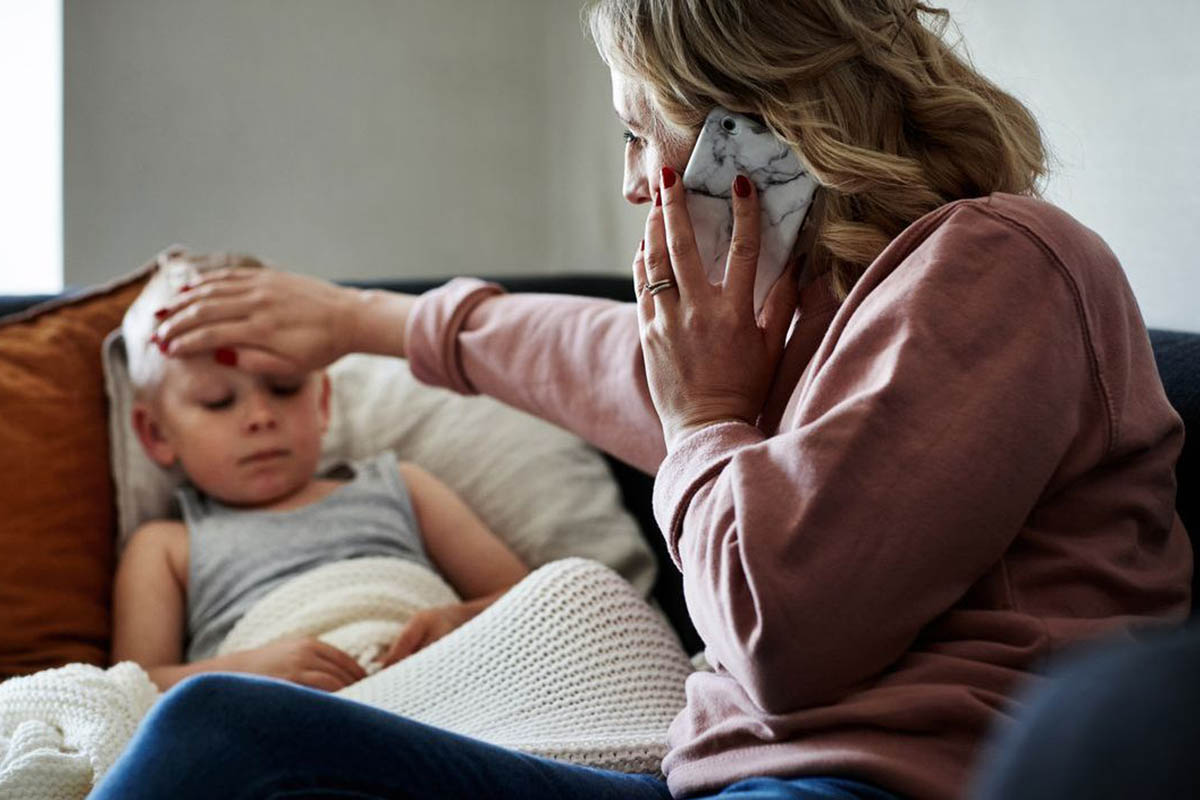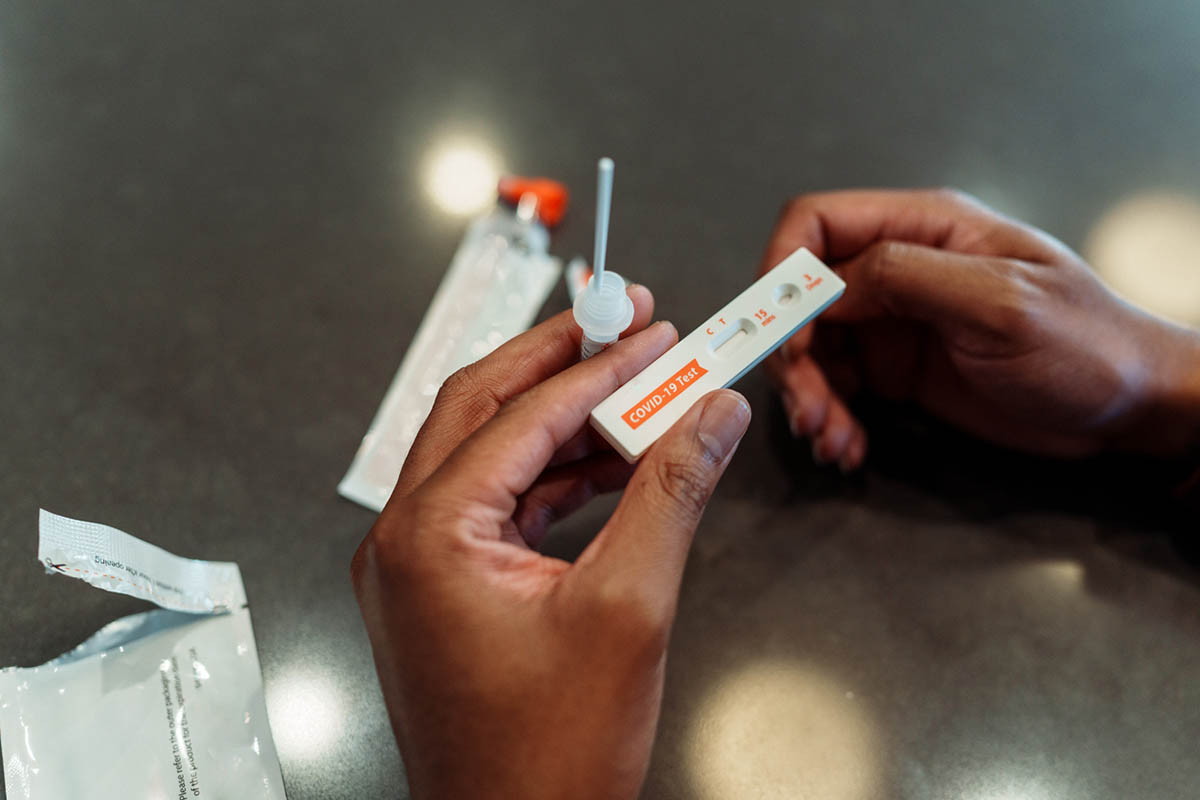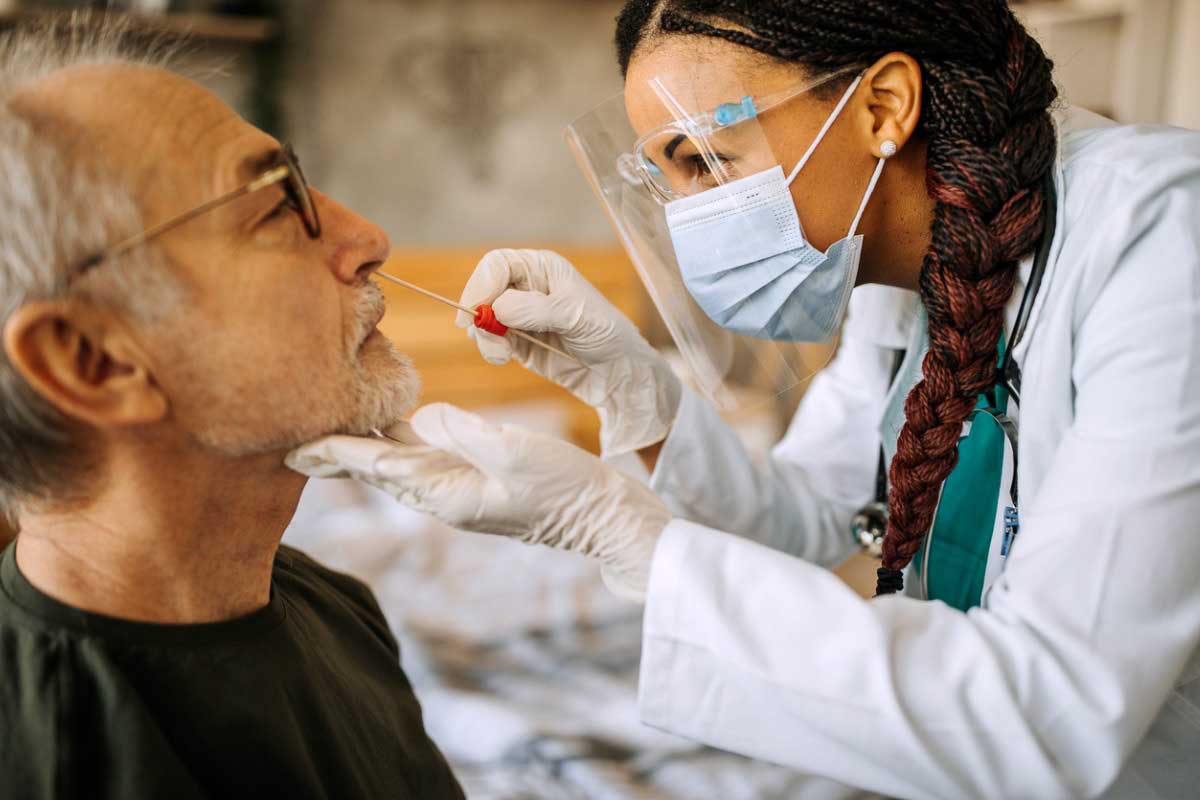
Mental Health Crisis Secondary to COVID-19–Related Stress:
A Case Series From a Child and Adolescent Inpatient Unit
The novel severe acute respiratory syndrome coronavirus 2,1,2 which caused the coronavirus disease 2019 (COVID-19) pandemic, has quickly spread across the globe.2 This pandemic has caused structural changes, physical harm, and emotional distress to individuals and communities worldwide,1,3-6 leading to a new wave of psychological stressors and worsening mental health crises.4,6-8 There have been reports of the negative psychological impact of the COVID-19 pandemic and its effects on adults and children alike.2
Findings from China have shown that more than 25% of their population has experienced moderate to severe stress related to COVID-19.9 A study7 examining the initial psychological responses of the general public in China from January 31 to February 2, 2020 showed that 53.8% of respondents rated the psychological impact of the pandemic as moderate or severe in nature, 16.5% reported moderate to severe depressive symptoms, 28.8% reported moderate to severe anxiety symptoms, and 8.1% reported moderate to severe stress levels. Studies6,7 also found that students have experienced a higher psychological burden due to the outbreak, with higher levels of stress, anxiety, and depression. Additionally, a recent American Psychiatric Association10 poll that surveyed 1,000 adults early in the COVID-19 pandemic showed that close to 40% of US residents were anxious about becoming seriously ill or dying with COVID-19. Nearly half of the respondents (48%) were worried about getting COVID-19, and many (62%) were anxious about the possibility of their loved ones becoming ill. Further, 33% of Americans reported a serious impact on their mental health because of the pandemic.10
The last public health crisis of comparable magnitude was the Spanish flu outbreak of 1918-1919, during which about one-third of the world population became infected. At that time, there was an increase in death by suicide, and the pandemic presumably contributed to this elevation in rate.6 In general, social isolation, fear, stress, and economic burden can lead to the development or exacerbation of suicidal behavior, especially in vulnerable individuals.6,8 Therefore, it is likely that there will be an increase in suicide rates during and following the current coronavirus pandemic.
At this time, much is unknown regarding the long-term mental health impacts of an infectious disease pandemic of this magnitude on children and adolescents. We present a case series of adolescents who were admitted to an inpatient psychiatric facility with mental health crisis and safety concerns due to COVID-19-related stress.
Case 1
A 15-year-old white girl with a history of bipolar disorder type II presented with concerns related to worsening depression and suicidal ideation with specific plan in the context of increased stress secondary to COVID-19. She had a history of multiple previous psychiatric hospitalizations. Since the outbreak of COVID-19, she had been feeling increasingly isolated and stated “this COVID took a toll on my mental health.” She also reported relationship issues in the context of social distancing, as she was unable to frequently see her partner. She reported feeling increasingly worthless and hopeless and proceeded to make a plan to overdose on her medications. During the course of her hospital stay, she was continued on her home medications including valproate 375 mg twice/d, aripiprazole 5 mg/d, bupropion extended release 150 mg/d, and guanfacine extended release 2 mg/d. Her therapy was focused on the development of interpersonal skills as well as coping skills to deal with stress related to being unable to see her partner. These coping skills included coloring, guided imagery, and deep breathing, which she reported to be helpful when dealing with the new stressors.
Case 2
A 17-year-old white girl with a history of disruptive mood dysregulation disorder and attention-deficit/hyperactivity disorder presented with concerns related to worsening depression, endorsing suicidal ideations and recent self-injurious behavior by cutting with an intent to kill herself in the context of stressors related to COVID-19. She had a history of multiple previous psychiatric hospitalizations. She reported being unable to see her friends as often as before the pandemic and having frequent arguments with her parents. Furthermore, she was unable to get away from her family and see other acquaintances whenever she had conflict with her parents due to the stay-at-home order and travel restrictions. During the course of her hospital stay, her escitalopram dose was titrated to 20 mg/d from 10 mg/d, and she was continued on lurasidone 20 mg at bedtime, lisdexamfetamine 40 mg/d, and trazodone 150 mg at bedtime. Her individual and family therapy sessions were focused on relationship issues and conflict resolution. She was discharged with referral to family based services to continue working on relationship issues with her family members.
Case 3
A 16-year-old biracial boy with no previous psychiatric history was transferred from the hospital medical floor after intentional ingestion of acetaminophen, ibuprofen, and isopropyl alcohol as a suicide attempt. Since the start of the pandemic, the only way he was able to connect with friends was through social media. He reported that his main stressor was a misunderstanding among his group of friends over social media and being unable to resolve the conflict in person. He also added that he was unable to see his pastor in person, who was a big support for him, and felt that virtual sessions were not as effective as meeting in person prior to the pandemic. He also reported that his academic performance declined after school was transitioned to distance learning, which added additional stress for him. Per his parents’ report, he appeared more isolated and withdrawn recently, but they were unaware he had been struggling with suicidal thoughts over the last couple of months. Evidence-based treatment options were discussed, and the patient and his family decided to try therapy first. He was actively involved in individual, group, and milieu therapies. He found journaling and music therapy to be very helpful and identified them as his main coping skills during the hospital stay. His treatment team also arranged virtual meetings with his pastor during the inpatient stay, and he was encouraged to discuss his stressors and challenges through the virtual platform. At the time of discharge, the patient’s home state was no longer under a stay-at-home order, so in-person visits were possible with his pastor while practicing social distancing and other protective measures.
Case 4
An 11-year-old black girl with no previous psychiatric history was admitted to the inpatient unit with concerns related to new onset of depression and anxiety in the context of COVID-19-related stressors. She reported stress related to school closure and being unable to see her best friends at school, which used to be comforting to her in the past. She reported new onset of panic attacks over the past few months and having more frequent and intense suicidal ideations, such as lying down in the street in traffic. She also started cutting herself on her thighs with the intent to kill herself. She was started on fluoxetine 10 mg/d. Her therapy was focused on learning new coping skills to deal with new stressors, and family sessions were focused on how family could support her during this stressful time. She was referred for weekly outpatient therapy through virtual media.
Discussion
There were no other medical or substance abuse comorbidities in any of these patients. All 4 patients were discharged home to either a step down to partial hospitalization program or to outpatient psychiatry and therapy follow-up. We also introduced new group therapy sessions with the primary focus of educating patients on the difference between social isolation and social distancing and how they could still connect with extended family and friends while practicing social distancing. Family meetings also incorporated education on specific stressors related to COVID-19. Stress management tools and available resources were shared, which families could utilize to help children and adolescents deal with COVID-19-related stress.
This case series emphasizes the impact that the COVID-19 pandemic has had on the mental health of children and adolescents with previous history of psychiatric illness and even in those with no previous history of mental health issues. The stressors related to COVID-19 varied from difficulty getting away from their families after a conflict or an argument to being unable to see their friends, significant others, or pastor due to restrictions on traveling and implementation of social distancing norms. Online schooling was perceived to be unhelpful, as the patients struggled academically to maintain their grades, and it also impacted their social life, as they were unable to see their peers.
The COVID-19 pandemic has had vast psychological impacts on all age groups and has led to profound changes in daily life including isolation and contact restriction.11 During the pandemic, schools across the nation have been temporarily closed, and classes and other resources have been suspended.11,12 With schools closed, socialization for children has been limited, and out-of-home activities have been suspended or have been moved to online formats.11 Furthermore, for children and adolescents with mental health needs, the closures have caused students who rely on school-based resources to lose such services.12 While telehealth visits remain an option, many group therapy sessions and partial programs have moved to a virtual format, which has exacerbated the social isolation with which many of these patients already struggle in the context of their mental health issues.
In a survey12 conducted by the mental health charity YoungMinds in the United Kingdom, 83% of children and adolescents reported that the current pandemic made their mental health conditions worse, and 26% reported that they were unable to access mental health support. Further, as school and other daily routines are important for coping, this mechanism is not in place when schools are closed. For children and adolescents with mental illness, losing these routines may make it difficult to cope and complete activities of daily living including hygiene and eating.12
Additionally, the COVID-19 pandemic has caused great economic devastation to many families and communities. The rising levels of unemployment have put stress on families and may result in emotional distress and violence.11 Further, these stressors and effects may lead to an increase in domestic violence and child abuse and neglect.11 All of these factors may contribute significantly to child and adolescent stress, further leading to worsening of mental illness and potentially leading to increased suicidal behavior during the current pandemic.
Suicide is the second leading cause of death in adolescents, a group that is already at high risk, and the COVID pandemic has brought a new set of stressors. There is currently a dearth in knowledge related to the long-term mental health effects of a disease outbreak of this magnitude on children and adolescents.12 As the pandemic continues, it is essential to prepare health care systems to provide both medical and mental health care. Additionally, the uncertainty surrounding the reopening of schools in the upcoming school year presents a new set of challenges, especially with regard to whether it will be in person, a hybrid model, or online. It is imperative that families, schools, and health care providers monitor this high-risk group closely and provide support to improve overall emotional well-being.
Received: July 22, 2020.
Published online: September 17, 2020.
Author contributions: Dr Jolly and Ms Batchelder contributed equally to the writing of this report.
Potential conflicts of interest: None.
Funding/support: None.
Additional information: Patient information has been de-identified to protect anonymity.
REFERENCES
1.Li S, Wang Y, Xue J, et al. The impact of COVID-19 epidemic declaration on psychological consequences: a study on active Weibo users. Int J Environ Res Public Health. 2020;17(6):2032. PubMed CrossRef
2.Cascella M, Michael R, Cuomo A, et al. Features, evaluation and treatment coronavirus (COVID-19). In: StatPearls (Internet). Treasure Island, FL: StatPearls Publishing; 2020.
3.Cao W, Fang Z, Hou G, et al. The psychological impact of the COVID-19 epidemic on college students in China. Psychiatry Res. 2020;287:112934. PubMed CrossRef
4.Cullen W, Gulati G, Kelly BD. Mental health in the COVID-19 pandemic. QJM. 2020;113(5):311-312. PubMed CrossRef
5.Huang Y, Zhao N. Generalized anxiety disorder, depressive symptoms and sleep quality during COVID-19 outbreak in China: a web-based cross-sectional survey. Psychiatry Res. 2020;288:112954. PubMed CrossRef
6.Sher L. The impact of the COVID-19 pandemic on suicide rates [published online ahead of print June 15, 2020]. QJM. PubMed CrossRef
7.Wang C, Pan R, Wan X, et al. Immediate psychological responses and associated factors during the initial stage of the 2019 coronavirus disease (COVID-19) epidemic among the general population in China. Int J Environ Res Public Health. 2020;17(5):1729. PubMed CrossRef
8.Minihan E, Gavin B, Kelly BD, et al. COVID-19, mental health and psychological first aid [published online ahead of print May 14, 2020]. Ir J Psychol Med. 2020:1-5. u.bMed CrossRef20
9.Taylor S, Landry CA, Paluszek MM, et al. Development and initial validation of the COVID Stress Scales. J Anxiety Disord. 2020;72:102232. PubMed CrossRef
10.New Poll: COVID-19 Impacting Mental Well-Being: Americans Feeling Anxious, Especially for Loved Ones; Older Adults are Less Anxious. American Psychiatric Association website. https://www.psychiatry.org/newsroom/news-releases/new-poll-covid-19-impacting-mental-well-being-americans-feeling-anxious-especially-for-loved-ones-older-adults-are-less-anxious. Accessed August 31, 2020.
11.Fegert JM, Vitiello B, Plener PL, et al. Challenges and burden of the coronavirus 2019 (COVID-19) pandemic for child and adolescent mental health: a narrative review to highlight clinical and research needs in the acute phase and the long return to normality. Child Adolesc Psychiatry Ment Health. 2020;14(1):20. PubMed CrossRef
12.Lee J. Mental health effects of school closures during COVID-19. Lancet Child Adolesc Health. 2020;4(6):421. PubMed CrossRef
aDepartment of Psychiatry and Behavioral Health, Penn State University College of Medicine, Hershey, Pennsylvania
bPenn State University College of Medicine, Hershey, Pennsylvania
*Corresponding author: Taranjeet S. Jolly, MD, Department of Psychiatry and Behavioral Health, Penn State University College of Medicine, 500 University Drive, Hershey, PA 17033 ([email protected]).
Prim Care Companion CNS Disord 2020;22(5):20l02763
To cite: Jolly TS, Batchelder E, Baweja R. Mental health crisis secondary to COVID-19-related stress: a case series from a child and adolescent inpatient unit. Prim Care Companion CNS Disord. 2020;22(5):20l02763.
To share: https://doi.org/10.4088/PCC.20l02763
© Copyright 2020 Physicians Postgraduate Press, Inc.
Please sign in or purchase this PDF for $40.00.





